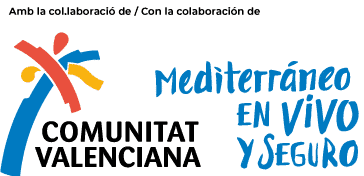A pink lake! Witchcraft! Well, it’s quite simple. We want to tell you about the natural phenomenon that explains the formation of the pink lagoon of Torrevieja.
You may have seen pictures on Instagram of many people that look like they were taken by a computer, but these mini lakes of pink water really exist, and you can find them in the province of Alicante, in the Valencian Community.
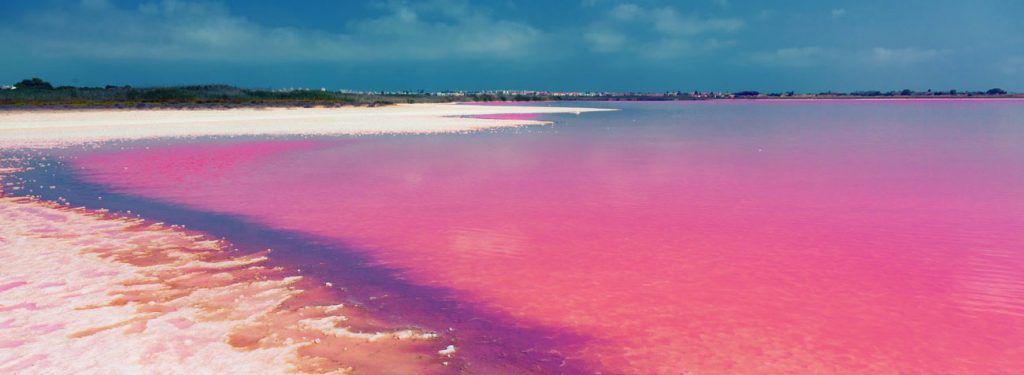
By definition they are usually freshwater reservoirs, shallower and less extensive than lakes. Well, this “big puddle” has several secrets that we are going to tell you with photos and a pinch of salt.
Surely you have thought that there is a trick, that there was a spill in the water and the natural space was left like this. Well no, we’ll explain how nature has worked its magic with a pinkish pigment. Here we go!
Index
What is the Laguna Rosa de Torrevieja?
The first thing is that the Laguna Rosa de Torrevieja is an expanse of salt water with a maximum length of 6km and a maximum width of 4km, pinkish color and is located in Torrevieja, in Alicante (Spain).
To give you an idea, the lagoon occupies about 1400 football fields. The dead sea shares with it the salinity, 350 grams per liter of water. Would you drink a glass of water with 10 tablespoons of salt in it?
PHOTOS OF THE LAGOON
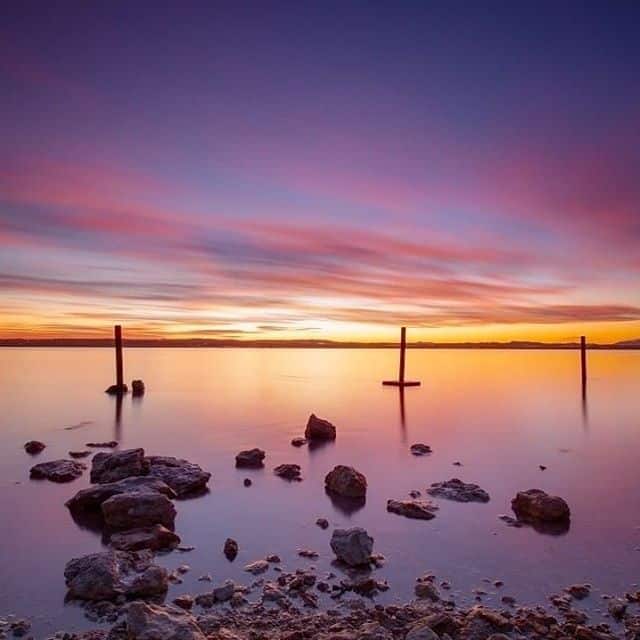
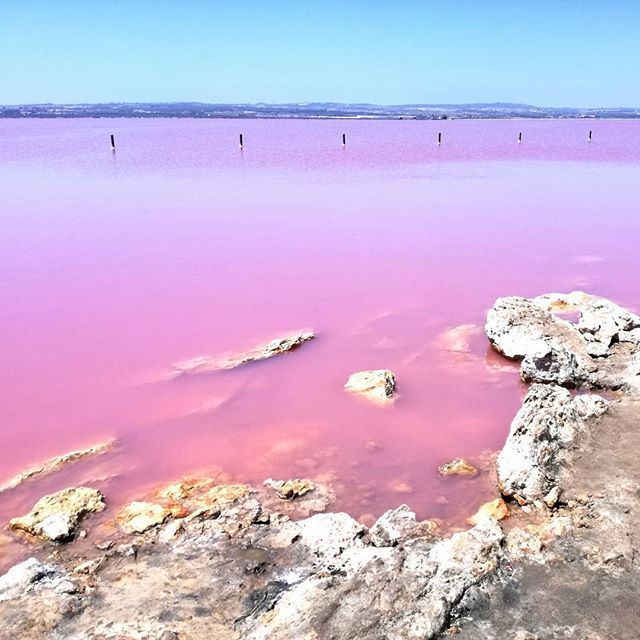
Why is the water pinkish-purple?
Let’s continue with the important thing, where does the pink color of the water come from? It is an effect produced by a bacterium ( halobacteria ) found in extreme environments of high salt concentration water and an algae (the dunaliella salina ).
The bacteria releases a pink pigment that gives the water that hue and the algae releases beta-carotene. The latter are used in the cosmetics and nutritional supplement industry.
At this point we introduce the flamingos and their favourite food. The small crustacean Artemia Salina, which lives in this environment so hostile to wildlife, and is red because it feeds on halobacteria.
Las Salinas
Attention to the tip! The salt mines of Torrevieja (Alicante) produce almost one million tons of salt per year. They are exported all over Europe and the USA. In addition, the Torrevieja salt flats are compared to the Dead Sea, because of the high salinity per litre as the water evaporates.
How is salt formed?
First, by means of irrigation channels and canals the salt is taken to the lagoon of La Mata. Being 4 meters below the sea, some sluice gates open in the channel and the water flows here naturally.
So it reaches the green lagoon and already begins to evaporate. It goes from a concentration of 30 g NaCl/L (common salt) to 150 g NaCL/L as the water evaporates through the action of solar radiation and wind.
This water is then transferred to the pink lagoon of Torrevieja, where it will reach a concentration of 300 g NaCl/L. It begins the process called crystallization, remaining at the bottom of the lagoon from 1 to 6 cm thick, making it suitable for collection.
How is salt collected?
Finally, the collection process is another peculiarity of these salt pans. It is not necessary to dry them for the collection, as it happens in the salt mines of Santa Pola. The collection takes place with a machine that moves around the lagoon, as if it were a caterpillar, breaking and lifting the salt slabs, which used to be done by hand by the so-called volvedores. Hence the name of the collecting machine, the“volvedora“, controlled by GPS by an operator.
The volvedora takes out the salt and by means of conveyor belts takes them to the boats, which in turn are pulled by a tugboat with paddles, very similar to the boats that were seen in the Mississippi River. There is very little depth and a conventional propeller motor cannot be used.
And finally it goes from the turner to the collector and from there to the belts for cleaning to finish in the garberas. Garberas are those giant mountains of salt that are formed to store and protect it from the environment. From here it is ground into different sizes for consumption.
La Mata and Torrevieja Lagoons Natural Park

This area of 3,743 hectares, declared a natural park, is located in the region of Vega Baja del Segura, in the south of the province of Alicante. Environmental education activities, guided tours and an inventory of 150 species of flora are carried out.
How big are the gaps?
There are two lagoons, a green one (La Mata) of 1,400 hectares and another one of pink waters (Torrevieja), as well as the salt pans. La Mata, is 2 km wide and 3 km long, half the length of the rosacea.
Can I swim in the lagoons?
Aunque ya lo hemos comentado, tanto la de la Mata como la laguna rosa de Torrevieja son lagunas saladas y no permiten el baño. No son una playa y no debería confundirse con la Playa de la Mata de Torrevieja. Está prohibido el baño en la salinas.
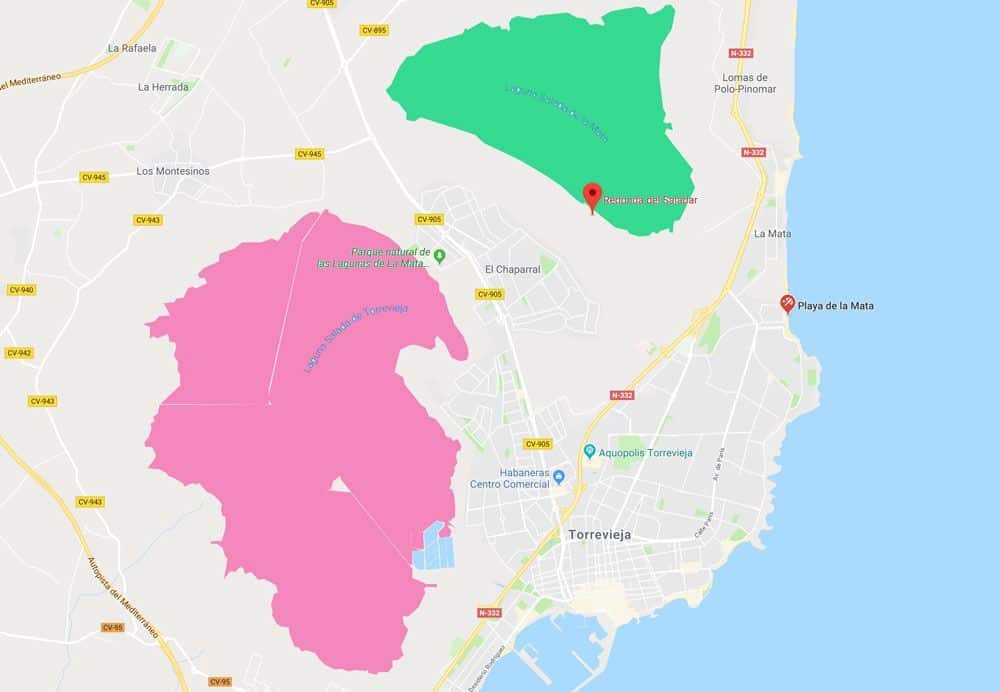
We recommend you to visit the interpretation center of the natural park, where they will explain the fauna and flora and routes to do.
What to see in the Natural Park?
- The Acequión
- The attic
- La Pinada (rest area)
- Remains of the old tower
- El Zampullín’ Observatory
- La Cigüeñuela’ (The Stork)
- The Fumarel
- Observatory ‘La Avoceta
- El Chorlitejo’ (The Plover)
Recommendations when visiting a protected area such as the pink lagoon of Torrevieja:
- If you are more than 15 people you have to comment it in the Interpretation Centre.
- For more than 35 you need a special permit.
- Pick up all your trash, all your wrappers.
- You cannot camp or park your caravan / motorhome in the park.
- Respect plants and animals and leave them in their environment, don’t take them away.
- No outside animals or plants. Any change in the ecosystem can be fatal.
- Don’t make new roads, follow the marked paths.
- No fire, no cigarette butts thrown away.
- If you go with animals, always tie them up.
Routes
Download your routes from the official website of the NP:
- Yellow Route: walking route.
- Red Route: bicycle route.
Las Salinas Greenway
Taking advantage of the old train tracks of the line between Albatera and Torrevieja, the Greenway of Torrevieja was created. We start from the interpretation centre, bordering the salt lagoon (that’s why they call it the greenway of the Salinas) and taking a 6.7 km walk along this route we arrive at the Acequión beach.
It is a stretch for walking, walking with the dog, cycling and is even accessible for people with reduced mobility problems or wheelchair users.
Enjoy a walk on a paved and tarmac path, perfect for travelers who are not wearing boots or equipped for complicated hiking routes.
Pink Flamingos: why are they that color?
Mainly you can see the flamingos in late summer in the pink lagoon of Torrevieja – La Mata. They are pink because of the food they carry. They eat foods with canthaxanthin, another pinkish compound.
This is why flamingos in captivity usually have a lighter shade. And you guessed it, they eat the crustacean that lives in the brine, the brine shrimp, artemia salina. From eating these little red crabs they get that color.
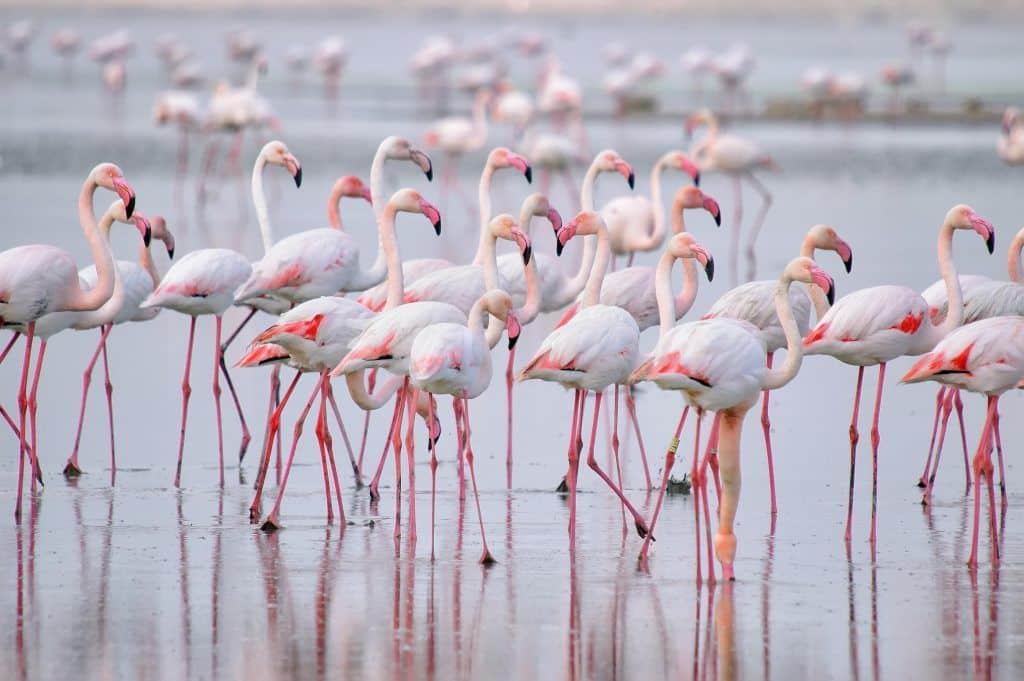
Only Doñana and Fuente de Piedra exceed the population of pink flamingos in the Torrevieja salt flats.
️ 11 Pink Lakes around the World
- Pink lake of Torrevieja or pink lake of Alicante if you Google it. On the Costa Blanca, Spain.
- Lake Eyre South, Australia.
- Lake Tuz Gola, Turkey.
- Sivash Lagoon, Russia.
- Lake Natron, Tanzania.
- Lake Quairading, Australia.
- Hutt Lagoon, Australia.
- Retba Lake in Senegal.
- Hillier Lake in Australia.
- Lake Bumbunga, Australia.
- Dusty Rose Lake in Canada.
The most impressive photos on the internet may be of the Hillier or Hutt Lagoon. But think about one thing: we have it in Spain!
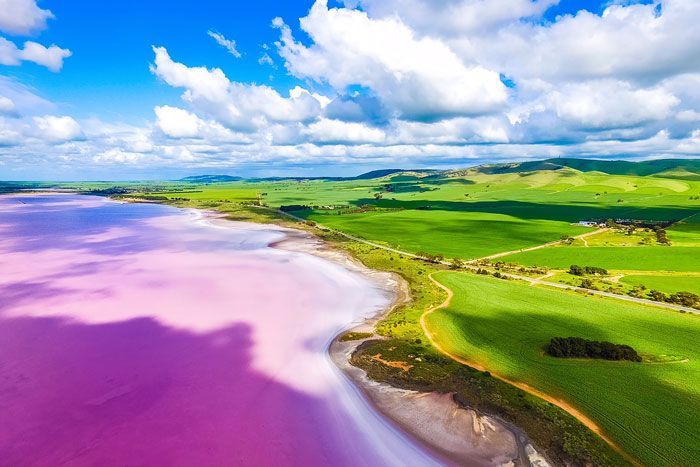
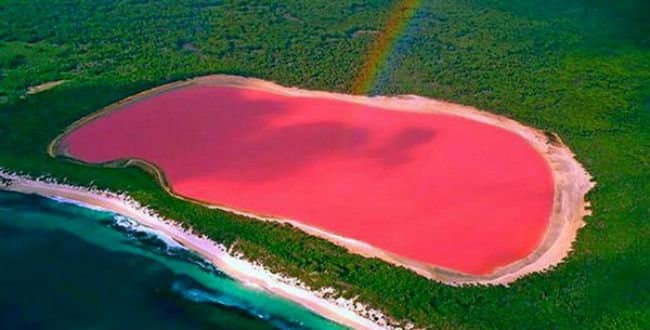
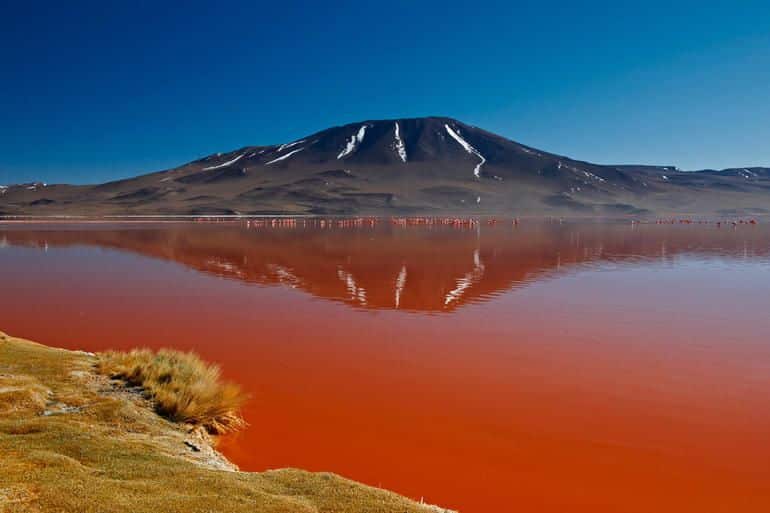
How to get to La Laguna Rosa de Torrevieja from the campsite
You will find the pink waters in the south of the province of Alicante, towards the airport and then Santa Pola and Torrevieja (Alicante).
To conclude, if you then want to visit Torrevieja, you should know that in summer it is one of the most touristy towns in Spain and that it is not known for its nature, despite having such a spectacular site.
People don’t stop searching on google and Tripadvisor for curious places to go sightseeing on their holidays and enjoy the sun and swimming. And although it is forbidden to swim, this excursion is still spectacular.
We don’t have to go to Canada or Cuenca to see landscapes of incredible beauty when we can find in the south of the province of Alicante a spectacle of pinkish waters, with our beloved pink lagoon of Alicante.

